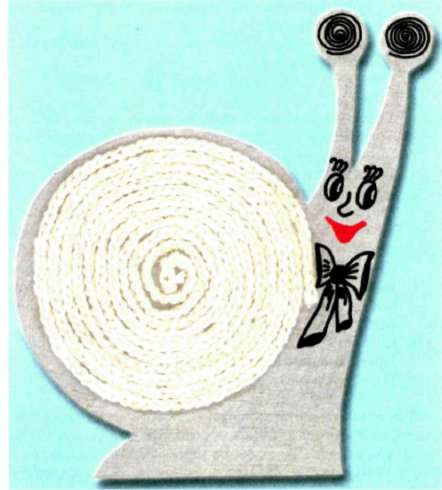On lesson, children are introduced to a new technique of bonding chains (the principle of "snails"), practiced in working with a template and scissors.
Material.
Template snail with a small hole in the center details; wool yarn white or gray; scheme sticking chain; white cardboard; knitting crochet hooks, scissors; glue, brush for glue.
Preparation for work.
Talk with the children about insects, their appearance, methods of movement, nutrition. Consider the illustration.
The lesson
Make a riddle:
Very slowly creeps,
On the back of your house carries.
In this house there is a gate.
And her name is ... (snail).

Ask the children:
• Consider the sample to answer the questions:
• who is depicted;
• what material is the base of the cochlea (cardboard and yarn);
• what parts of the image of a snail (head and torso);
• what made the torso (from the related links).
• Circle on the cardboard template on the basis of the cochlea, mark the center of the part point (through a hole in the center of the pattern).
• Cut the snail.
• To consider the scheme of the bonded chains and to draw children's attention to the fact that the chain is pasted not only part contour but also completely fills it. Start to stick the chain need center details: spread glue to the middle and starting from the center, put the chain rings on tightly and lying to each other. When one chain ends, can be linked another and also to stick to the basis, and so on, until sealed chains all the body of the snail.
• Link chain.
• Glue the chain to the base.
• Draw the snail eyes, horns, mouth and bow.
In the analysis of select works in which the chains are glued tightly to each other, the ends of the thread hidden or tightly glued to the base. Invite the children to tell what they did the snail (fun, playful, sad...), and explain why it is so.



